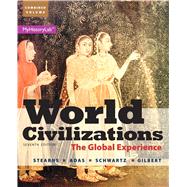ALERT: Before you purchase, check with your instructor or review your course syllabus to ensure that you select the correct ISBN. Several versions of Pearson's MyLab & Mastering products exist for each title, including customized versions for individual schools, and registrations are not transferable. In addition, you may need a CourseID, provided by your instructor, to register for and use Pearson's MyLab & Mastering products.
Packages
Access codes for Pearson's MyLab & Mastering products may not be included when purchasing or renting from companies other than Pearson; check with the seller before completing your purchase.
Used or rental books
If you rent or purchase a used book with an access code, the access code may have been redeemed previously and you may have to purchase a new access code.
Access codes
Access codes that are purchased from sellers other than Pearson carry a higher risk of being either the wrong ISBN or a previously redeemed code. Check with the seller prior to purchase.
0133828204 / 9780133828207 World Civilizations: The Global Experience, Combined Volume Plus NEW MyHistoryLab with Pearson eText -- Access Card Package
Package consists of:
0205206549 / 9780205206544 NEW MyHistoryLab with Pearson eText -- Valuepack Access Card
0205986307 / 9780205986309 World Civilizations: The Global Experience, Combined Volume
--
Presents a truly global history
This global world history text emphasizes the major stages in societies’ different interactions and assesses the development of major societies. Encompassing social, cultural, political and economic history, the authors examine key civilizations in world history. World Civilizations balances the discussion of independent developments in the world's major civilizations with comparative analysis of the results of global contact.
MyHistoryLab is an integral part of the Stearns/Adas/Schwartz/Gilbert program. An integrated etext and and engaging resources bring history to life for students.








